-

Oct
31
Interpretive Summary: Teresa A. Davis Elected as a New Member of The National Academy of Medicine

Teresa A. Davis, PhD, ASAS Fellow, former ASAS President, and past chair of the ASAS Public Policy Committee was elected as a new member of The National Academy of Medicine (NAM). The academy announced the election of 90 regular members and 10 international members during its annual meeting on October 21, 2024.
Read more
-

Oct
24
Interpretive Summary: Current and future trends in managing internal parasites in forage-based livestock
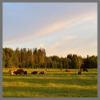
Gastrointestinal nematodes or worm parasites in grazing livestock and horses are a major health challenge due to worldwide prevalence of the parasite’s resistance to available dewormers. Pharmaceutical companies have limited interest in development of new products because of cost and the likelihood that worms will develop resistance to new compounds and continue to market older dewormers.
Read more
-

Oct
24
Interpretive Summary: Nutritional strategies for small ruminant gastrointestinal nematode management
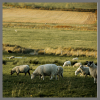
Gastrointestinal nematodes (GIN) are the most important health issue for small ruminants in many world regions. The GIN parasitism causes welfare concerns and severe economic losses related to reduced productivity, cost of treatment, and, eventually, mortality.
Read more
-

Oct
24
Interpretive Summary: Sustainable worm control in ruminants in Europe: current perspectives

Cattle, sheep, goats, and their associated industries are a vital component in the development of rural areas and sustainable land use strategies in Europe. With 77 million bovines and 74 million sheep and goats in the EU (Eurostat, 2023), ruminant production is deeply linked to European culture.
Read more
-

Oct
24
Interpretive Summary: How mites influence cage-free egg production in the United States, mite management strategies, and the mitigating role of genomic selection
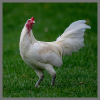
Egg production in the United States has changed significantly in the last century. From the 1920s to the 1960s, egg production underwent a significant evolution, driven by advancements in breeding and husbandry practices (Kidd and Anderson, 2019).
Read more
-

Oct
24
Interpretive Summary: Deworming programs for horses in the United States: past, present, and future
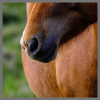
Developing deworming programs for horse farms based on scientific evidence has become more challenging as the concern over the development of anthelmintic resistance (AR) by internal parasites has continued to grow over the past few decades. The once simple recommendation of “deworm horses every two months” has become outdated and is strongly discouraged by many experts in the field as it is believed to hasten the development of AR in parasites which renders commonly used deworming drugs less effective.
Read more
-

Oct
23
The Giving Herd - ASAS Foundation Newsletter - October 2024
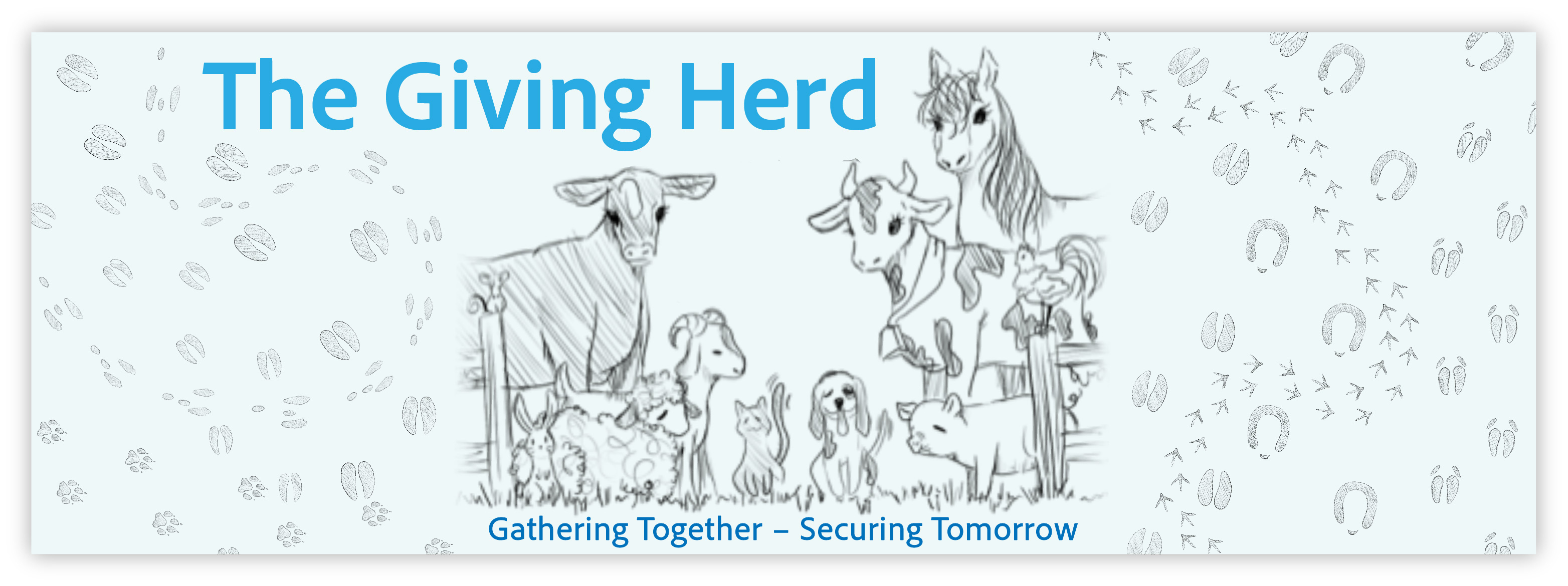
The October Edition of The Giving Herd, an ASAS Foundation Newsletter.
Read more
-

Oct
17
Interpretive Summary: Impacts of increasing levels of salt on intake, digestion, and rumen fermentation with beef cattle consuming low-quality forages
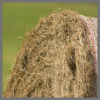
Beef cattle are often provided supplements to compensate for seasonal nutrient deficiencies. However, one of the challenges to strategic supplementation is controlling individual intake variation. The most common method to regulate intake of self-fed supplements is the use of salt.
Read more
-

Oct
17
Interpretive Summary: Effects of fermented soybean meal and supplemental methionine and lysine on growth, digestibility, body composition, and amino acid composition of Beluga (Huso huso)
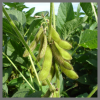
The growing aquaculture production can greatly affect the aquafeed industry and cause problems, especially in providing fish meal (FM) for diets. Price and production instability in FM can restrict producers’ ability to produce aquafeed. Therefore, it is advised to use plant proteins such as soybean meal (SBM), which has high protein, reasonable price, and relatively balanced amino acids profile.
Read more
-

Oct
17
Interpretive Summary: A microencapsulated blend of botanicals supports weaning piglets during a lipopolysaccharide challenge by modulating liver inflammation and intestinal integrity
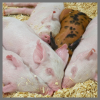
Piglets are particularly susceptible to stress due to the abrupt changes they face during weaning. These stressors cause a surge of oxidation and inflammation, particularly in the intestinal tract. Inflammation in the intestine causes a loss in its barrier function and facilitates the translocation of harmful compounds.
Read more
-

Oct
17
Interpretive Summary: Multi-omics analysis reveals associations between host gene expression, gut microbiota, and metabolites in chickens
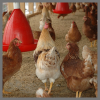
Egg-laying is a crucial and intricate trait in chickens. To comprehensively explore the egg-laying mechanism in chickens, we analyzed the host transcriptome, gut microbiota, and metabolome during the pre-laying, peak-laying, and late-laying periods. Transcriptome analysis of the tissues related to the hypothalamic-pituitary-liver (HPL) axis revealed the dynamic gene expression of hormone secretion and amino acid metabolism.
Read more
-

Oct
17
Interpretive Summary: Effects of a veterinary gastrointestinal diet on fecal characteristics, metabolites, and microbiota concentrations of adult cats treated with metronidazole

The objective of this study was to determine how a veterinary gastrointestinal diet impacts the fecal characteristics, metabolites, and microbiota concentrations of adult cats treated with metronidazole. All cats were fed a leading grocery brand diet (GBD) during a 2-wk baseline, dosed orally with metronidazole (20 mg/kg BW twice daily) for 2 wk, then randomly allotted to one of 2 treatments [GBD; BLUE Natural Veterinary Diet GI Gastrointestinal Support (BB)] and fed for 4 wk.
Read more
-

Oct
17
Interpretive Summary: Higher abundance of 2-dehydro-d-gluconate in the plasma of sub-fertile or infertile Bos taurus heifers
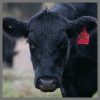
During the development of heifers for cow replacement, producers must invest substantial resources in each animal for over 15 mo. While the use of resources is equivalent across heifers being developed on a farm, a substantial proportion of the animals will not produce a calf.
Read more
-

Oct
10
Interpretive Summary: A review on the effect of soy bioactive components on growth and health outcomes in pigs and broiler chickens
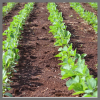
Soybeans are commonly included in animal diets, often in the form of soybean meal, as a source of energy and high-quality protein. Aside from these macronutrient fractions, soy also includes many minor components that have the potential to both positively and negatively impact the growth and health of nonruminant animal species used in production agriculture.
Read more
-

Oct
10
Interpretive Summary: Reduction of particle size of field peas (Pisum sativum L.) increases net energy and digestibility of starch when fed to growing pigs, but there is no difference in nutritional value between peas from...

The objective of this research was to test the hypothesis that the particle size of field peas and the location where field peas are grown may affect the apparent total tract digestibility of nutrients and gross energy, concentrations of net energy (NE), the apparent ileal digestibility of starch, and the standardized ileal digestibility (SID) of crude protein (CP) and amino acids (AA).
Read more
-

Oct
10
Interpretive Summary: New findings on the genetic basis of feathered legs in chickens: association of CUBN gene mutations with feathered-leg phenotype

Birds display remarkable diversity in the distribution and morphology of scales and feathers on their legs. However, the genetic and developmental mechanisms controlling this diversity are complex and remain largely unknown. Feathered legs are a phenotypic trait of domestic chickens, which have undergone intense selection.
Read more
-

Oct
10
Interpretive Summary: Chicken meal is not an appropriate reference protein for estimating protein quality of ingredients used in extruded diets intended for dogs

Metabolic availability (MA) of an amino acid (AA) is the portion of a dietary AA that is both digestible and available for protein synthesis. Peas are a commonly used protein source in grain-free dog foods, often included in large proportions. Methionine (Met) is an essential AA and the first limiting AA in peas so knowing the MA of Met in peas can ensure sufficient bioavailable Met is provided in these diets.
Read more
-

Oct
10
Interpretive Summary: Technical note: assessing GPS sensor accuracy using real-time kinematic device for livestock tracking
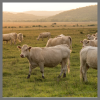
GPS sensors play a pivotal role in modern livestock tracking, enabling producers and researchers to monitor grazing livestock, understand their behavior, and assess health indicators. Despite their widespread use, effectively interpreting the gathered data poses challenges due to positioning inaccuracies.
Read more
-

Oct
10
Interpretive Summary: Effect of supplementing algae to breeding and early gestation first calf heifers on growth and reproduction
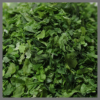
Docosahexaenoic acid (DHA, 22:6n-3) and eicosapentaenoic acid (EPA, 20:5n-3) are long-chain omega-3 poly-unsaturated fatty acids (PUFA) that have important biological effects on reproduction through their involvement in hormone and series 3 prostaglandin synthesis. Ruminant tissues are naturally almost devoid of omega-3 long-chain PUFA, specifically EPA and DHA.
Read more
-

Oct
03
Interpretive Summary: Effects of a Bacillus-based direct-fed microbial on performance, blood parameters, fecal characteristics, rumen morphometrics, and intestinal gene expression in finishing beef bulls
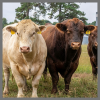
One of the main alternatives of additives to modulate the microbial population in the gastrointestinal tract (GIT), especially in the intestine, is the use of direct-fed microbials (DFM). This class of additives comprises all the feed products that contain a live or naturally occurring source of microorganism.
Read more
 OctInterpretive Summary: Teresa A. Davis Elected as a New Member of The National Academy of Medicine
OctInterpretive Summary: Teresa A. Davis Elected as a New Member of The National Academy of Medicine Teresa A. Davis, PhD, ASAS Fellow, former ASAS President, and past chair of the ASAS Public Policy Committee was elected as a new member of The National Academy of Medicine (NAM). The academy announced the election of 90 regular members and 10 international members during its annual meeting on October 21, 2024.
Teresa A. Davis, PhD, ASAS Fellow, former ASAS President, and past chair of the ASAS Public Policy Committee was elected as a new member of The National Academy of Medicine (NAM). The academy announced the election of 90 regular members and 10 international members during its annual meeting on October 21, 2024. OctInterpretive Summary: Current and future trends in managing internal parasites in forage-based livestock
OctInterpretive Summary: Current and future trends in managing internal parasites in forage-based livestock Gastrointestinal nematodes or worm parasites in grazing livestock and horses are a major health challenge due to worldwide prevalence of the parasite’s resistance to available dewormers. Pharmaceutical companies have limited interest in development of new products because of cost and the likelihood that worms will develop resistance to new compounds and continue to market older dewormers.
Gastrointestinal nematodes or worm parasites in grazing livestock and horses are a major health challenge due to worldwide prevalence of the parasite’s resistance to available dewormers. Pharmaceutical companies have limited interest in development of new products because of cost and the likelihood that worms will develop resistance to new compounds and continue to market older dewormers. OctInterpretive Summary: Nutritional strategies for small ruminant gastrointestinal nematode management
OctInterpretive Summary: Nutritional strategies for small ruminant gastrointestinal nematode management Gastrointestinal nematodes (GIN) are the most important health issue for small ruminants in many world regions. The GIN parasitism causes welfare concerns and severe economic losses related to reduced productivity, cost of treatment, and, eventually, mortality.
Gastrointestinal nematodes (GIN) are the most important health issue for small ruminants in many world regions. The GIN parasitism causes welfare concerns and severe economic losses related to reduced productivity, cost of treatment, and, eventually, mortality. OctInterpretive Summary: Sustainable worm control in ruminants in Europe: current perspectives
OctInterpretive Summary: Sustainable worm control in ruminants in Europe: current perspectives Cattle, sheep, goats, and their associated industries are a vital component in the development of rural areas and sustainable land use strategies in Europe. With 77 million bovines and 74 million sheep and goats in the EU (Eurostat, 2023), ruminant production is deeply linked to European culture.
Cattle, sheep, goats, and their associated industries are a vital component in the development of rural areas and sustainable land use strategies in Europe. With 77 million bovines and 74 million sheep and goats in the EU (Eurostat, 2023), ruminant production is deeply linked to European culture. OctInterpretive Summary: How mites influence cage-free egg production in the United States, mite management strategies, and the mitigating role of genomic selection
OctInterpretive Summary: How mites influence cage-free egg production in the United States, mite management strategies, and the mitigating role of genomic selection Egg production in the United States has changed significantly in the last century. From the 1920s to the 1960s, egg production underwent a significant evolution, driven by advancements in breeding and husbandry practices (Kidd and Anderson, 2019).
Egg production in the United States has changed significantly in the last century. From the 1920s to the 1960s, egg production underwent a significant evolution, driven by advancements in breeding and husbandry practices (Kidd and Anderson, 2019). OctInterpretive Summary: Deworming programs for horses in the United States: past, present, and future
OctInterpretive Summary: Deworming programs for horses in the United States: past, present, and future Developing deworming programs for horse farms based on scientific evidence has become more challenging as the concern over the development of anthelmintic resistance (AR) by internal parasites has continued to grow over the past few decades. The once simple recommendation of “deworm horses every two months” has become outdated and is strongly discouraged by many experts in the field as it is believed to hasten the development of AR in parasites which renders commonly used deworming drugs less effective.
Developing deworming programs for horse farms based on scientific evidence has become more challenging as the concern over the development of anthelmintic resistance (AR) by internal parasites has continued to grow over the past few decades. The once simple recommendation of “deworm horses every two months” has become outdated and is strongly discouraged by many experts in the field as it is believed to hasten the development of AR in parasites which renders commonly used deworming drugs less effective. OctThe Giving Herd - ASAS Foundation Newsletter - October 2024
OctThe Giving Herd - ASAS Foundation Newsletter - October 2024 The October Edition of The Giving Herd, an ASAS Foundation Newsletter.
The October Edition of The Giving Herd, an ASAS Foundation Newsletter. OctInterpretive Summary: Impacts of increasing levels of salt on intake, digestion, and rumen fermentation with beef cattle consuming low-quality forages
OctInterpretive Summary: Impacts of increasing levels of salt on intake, digestion, and rumen fermentation with beef cattle consuming low-quality forages Beef cattle are often provided supplements to compensate for seasonal nutrient deficiencies. However, one of the challenges to strategic supplementation is controlling individual intake variation. The most common method to regulate intake of self-fed supplements is the use of salt.
Beef cattle are often provided supplements to compensate for seasonal nutrient deficiencies. However, one of the challenges to strategic supplementation is controlling individual intake variation. The most common method to regulate intake of self-fed supplements is the use of salt. OctInterpretive Summary: Effects of fermented soybean meal and supplemental methionine and lysine on growth, digestibility, body composition, and amino acid composition of Beluga (Huso huso)
OctInterpretive Summary: Effects of fermented soybean meal and supplemental methionine and lysine on growth, digestibility, body composition, and amino acid composition of Beluga (Huso huso) The growing aquaculture production can greatly affect the aquafeed industry and cause problems, especially in providing fish meal (FM) for diets. Price and production instability in FM can restrict producers’ ability to produce aquafeed. Therefore, it is advised to use plant proteins such as soybean meal (SBM), which has high protein, reasonable price, and relatively balanced amino acids profile.
The growing aquaculture production can greatly affect the aquafeed industry and cause problems, especially in providing fish meal (FM) for diets. Price and production instability in FM can restrict producers’ ability to produce aquafeed. Therefore, it is advised to use plant proteins such as soybean meal (SBM), which has high protein, reasonable price, and relatively balanced amino acids profile. OctInterpretive Summary: A microencapsulated blend of botanicals supports weaning piglets during a lipopolysaccharide challenge by modulating liver inflammation and intestinal integrity
OctInterpretive Summary: A microencapsulated blend of botanicals supports weaning piglets during a lipopolysaccharide challenge by modulating liver inflammation and intestinal integrity Piglets are particularly susceptible to stress due to the abrupt changes they face during weaning. These stressors cause a surge of oxidation and inflammation, particularly in the intestinal tract. Inflammation in the intestine causes a loss in its barrier function and facilitates the translocation of harmful compounds.
Piglets are particularly susceptible to stress due to the abrupt changes they face during weaning. These stressors cause a surge of oxidation and inflammation, particularly in the intestinal tract. Inflammation in the intestine causes a loss in its barrier function and facilitates the translocation of harmful compounds. OctInterpretive Summary: Multi-omics analysis reveals associations between host gene expression, gut microbiota, and metabolites in chickens
OctInterpretive Summary: Multi-omics analysis reveals associations between host gene expression, gut microbiota, and metabolites in chickens Egg-laying is a crucial and intricate trait in chickens. To comprehensively explore the egg-laying mechanism in chickens, we analyzed the host transcriptome, gut microbiota, and metabolome during the pre-laying, peak-laying, and late-laying periods. Transcriptome analysis of the tissues related to the hypothalamic-pituitary-liver (HPL) axis revealed the dynamic gene expression of hormone secretion and amino acid metabolism.
Egg-laying is a crucial and intricate trait in chickens. To comprehensively explore the egg-laying mechanism in chickens, we analyzed the host transcriptome, gut microbiota, and metabolome during the pre-laying, peak-laying, and late-laying periods. Transcriptome analysis of the tissues related to the hypothalamic-pituitary-liver (HPL) axis revealed the dynamic gene expression of hormone secretion and amino acid metabolism. OctInterpretive Summary: Effects of a veterinary gastrointestinal diet on fecal characteristics, metabolites, and microbiota concentrations of adult cats treated with metronidazole
OctInterpretive Summary: Effects of a veterinary gastrointestinal diet on fecal characteristics, metabolites, and microbiota concentrations of adult cats treated with metronidazole The objective of this study was to determine how a veterinary gastrointestinal diet impacts the fecal characteristics, metabolites, and microbiota concentrations of adult cats treated with metronidazole. All cats were fed a leading grocery brand diet (GBD) during a 2-wk baseline, dosed orally with metronidazole (20 mg/kg BW twice daily) for 2 wk, then randomly allotted to one of 2 treatments [GBD; BLUE Natural Veterinary Diet GI Gastrointestinal Support (BB)] and fed for 4 wk.
The objective of this study was to determine how a veterinary gastrointestinal diet impacts the fecal characteristics, metabolites, and microbiota concentrations of adult cats treated with metronidazole. All cats were fed a leading grocery brand diet (GBD) during a 2-wk baseline, dosed orally with metronidazole (20 mg/kg BW twice daily) for 2 wk, then randomly allotted to one of 2 treatments [GBD; BLUE Natural Veterinary Diet GI Gastrointestinal Support (BB)] and fed for 4 wk. OctInterpretive Summary: Higher abundance of 2-dehydro-d-gluconate in the plasma of sub-fertile or infertile Bos taurus heifers
OctInterpretive Summary: Higher abundance of 2-dehydro-d-gluconate in the plasma of sub-fertile or infertile Bos taurus heifers During the development of heifers for cow replacement, producers must invest substantial resources in each animal for over 15 mo. While the use of resources is equivalent across heifers being developed on a farm, a substantial proportion of the animals will not produce a calf.
During the development of heifers for cow replacement, producers must invest substantial resources in each animal for over 15 mo. While the use of resources is equivalent across heifers being developed on a farm, a substantial proportion of the animals will not produce a calf. OctInterpretive Summary: A review on the effect of soy bioactive components on growth and health outcomes in pigs and broiler chickens
OctInterpretive Summary: A review on the effect of soy bioactive components on growth and health outcomes in pigs and broiler chickens Soybeans are commonly included in animal diets, often in the form of soybean meal, as a source of energy and high-quality protein. Aside from these macronutrient fractions, soy also includes many minor components that have the potential to both positively and negatively impact the growth and health of nonruminant animal species used in production agriculture.
Soybeans are commonly included in animal diets, often in the form of soybean meal, as a source of energy and high-quality protein. Aside from these macronutrient fractions, soy also includes many minor components that have the potential to both positively and negatively impact the growth and health of nonruminant animal species used in production agriculture. OctInterpretive Summary: Reduction of particle size of field peas (Pisum sativum L.) increases net energy and digestibility of starch when fed to growing pigs, but there is no difference in nutritional value between peas from...
OctInterpretive Summary: Reduction of particle size of field peas (Pisum sativum L.) increases net energy and digestibility of starch when fed to growing pigs, but there is no difference in nutritional value between peas from... The objective of this research was to test the hypothesis that the particle size of field peas and the location where field peas are grown may affect the apparent total tract digestibility of nutrients and gross energy, concentrations of net energy (NE), the apparent ileal digestibility of starch, and the standardized ileal digestibility (SID) of crude protein (CP) and amino acids (AA).
The objective of this research was to test the hypothesis that the particle size of field peas and the location where field peas are grown may affect the apparent total tract digestibility of nutrients and gross energy, concentrations of net energy (NE), the apparent ileal digestibility of starch, and the standardized ileal digestibility (SID) of crude protein (CP) and amino acids (AA). OctInterpretive Summary: New findings on the genetic basis of feathered legs in chickens: association of CUBN gene mutations with feathered-leg phenotype
OctInterpretive Summary: New findings on the genetic basis of feathered legs in chickens: association of CUBN gene mutations with feathered-leg phenotype Birds display remarkable diversity in the distribution and morphology of scales and feathers on their legs. However, the genetic and developmental mechanisms controlling this diversity are complex and remain largely unknown. Feathered legs are a phenotypic trait of domestic chickens, which have undergone intense selection.
Birds display remarkable diversity in the distribution and morphology of scales and feathers on their legs. However, the genetic and developmental mechanisms controlling this diversity are complex and remain largely unknown. Feathered legs are a phenotypic trait of domestic chickens, which have undergone intense selection. OctInterpretive Summary: Chicken meal is not an appropriate reference protein for estimating protein quality of ingredients used in extruded diets intended for dogs
OctInterpretive Summary: Chicken meal is not an appropriate reference protein for estimating protein quality of ingredients used in extruded diets intended for dogs Metabolic availability (MA) of an amino acid (AA) is the portion of a dietary AA that is both digestible and available for protein synthesis. Peas are a commonly used protein source in grain-free dog foods, often included in large proportions. Methionine (Met) is an essential AA and the first limiting AA in peas so knowing the MA of Met in peas can ensure sufficient bioavailable Met is provided in these diets.
Metabolic availability (MA) of an amino acid (AA) is the portion of a dietary AA that is both digestible and available for protein synthesis. Peas are a commonly used protein source in grain-free dog foods, often included in large proportions. Methionine (Met) is an essential AA and the first limiting AA in peas so knowing the MA of Met in peas can ensure sufficient bioavailable Met is provided in these diets. OctInterpretive Summary: Technical note: assessing GPS sensor accuracy using real-time kinematic device for livestock tracking
OctInterpretive Summary: Technical note: assessing GPS sensor accuracy using real-time kinematic device for livestock tracking GPS sensors play a pivotal role in modern livestock tracking, enabling producers and researchers to monitor grazing livestock, understand their behavior, and assess health indicators. Despite their widespread use, effectively interpreting the gathered data poses challenges due to positioning inaccuracies.
GPS sensors play a pivotal role in modern livestock tracking, enabling producers and researchers to monitor grazing livestock, understand their behavior, and assess health indicators. Despite their widespread use, effectively interpreting the gathered data poses challenges due to positioning inaccuracies. OctInterpretive Summary: Effect of supplementing algae to breeding and early gestation first calf heifers on growth and reproduction
OctInterpretive Summary: Effect of supplementing algae to breeding and early gestation first calf heifers on growth and reproduction Docosahexaenoic acid (DHA, 22:6n-3) and eicosapentaenoic acid (EPA, 20:5n-3) are long-chain omega-3 poly-unsaturated fatty acids (PUFA) that have important biological effects on reproduction through their involvement in hormone and series 3 prostaglandin synthesis. Ruminant tissues are naturally almost devoid of omega-3 long-chain PUFA, specifically EPA and DHA.
Docosahexaenoic acid (DHA, 22:6n-3) and eicosapentaenoic acid (EPA, 20:5n-3) are long-chain omega-3 poly-unsaturated fatty acids (PUFA) that have important biological effects on reproduction through their involvement in hormone and series 3 prostaglandin synthesis. Ruminant tissues are naturally almost devoid of omega-3 long-chain PUFA, specifically EPA and DHA. OctInterpretive Summary: Effects of a Bacillus-based direct-fed microbial on performance, blood parameters, fecal characteristics, rumen morphometrics, and intestinal gene expression in finishing beef bulls
OctInterpretive Summary: Effects of a Bacillus-based direct-fed microbial on performance, blood parameters, fecal characteristics, rumen morphometrics, and intestinal gene expression in finishing beef bulls One of the main alternatives of additives to modulate the microbial population in the gastrointestinal tract (GIT), especially in the intestine, is the use of direct-fed microbials (DFM). This class of additives comprises all the feed products that contain a live or naturally occurring source of microorganism.
One of the main alternatives of additives to modulate the microbial population in the gastrointestinal tract (GIT), especially in the intestine, is the use of direct-fed microbials (DFM). This class of additives comprises all the feed products that contain a live or naturally occurring source of microorganism.



